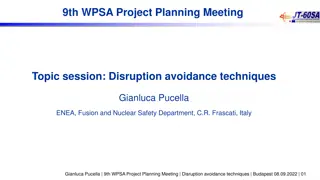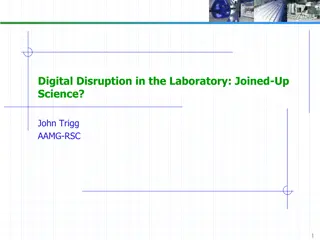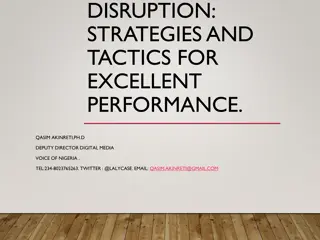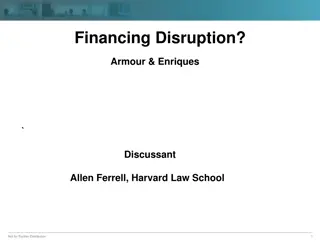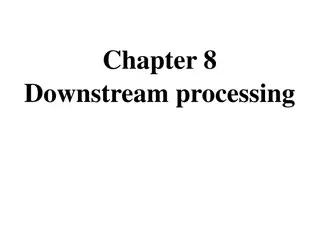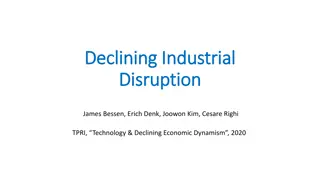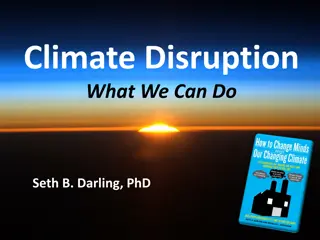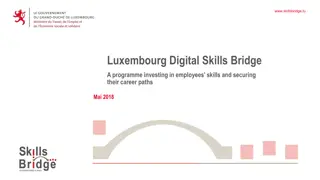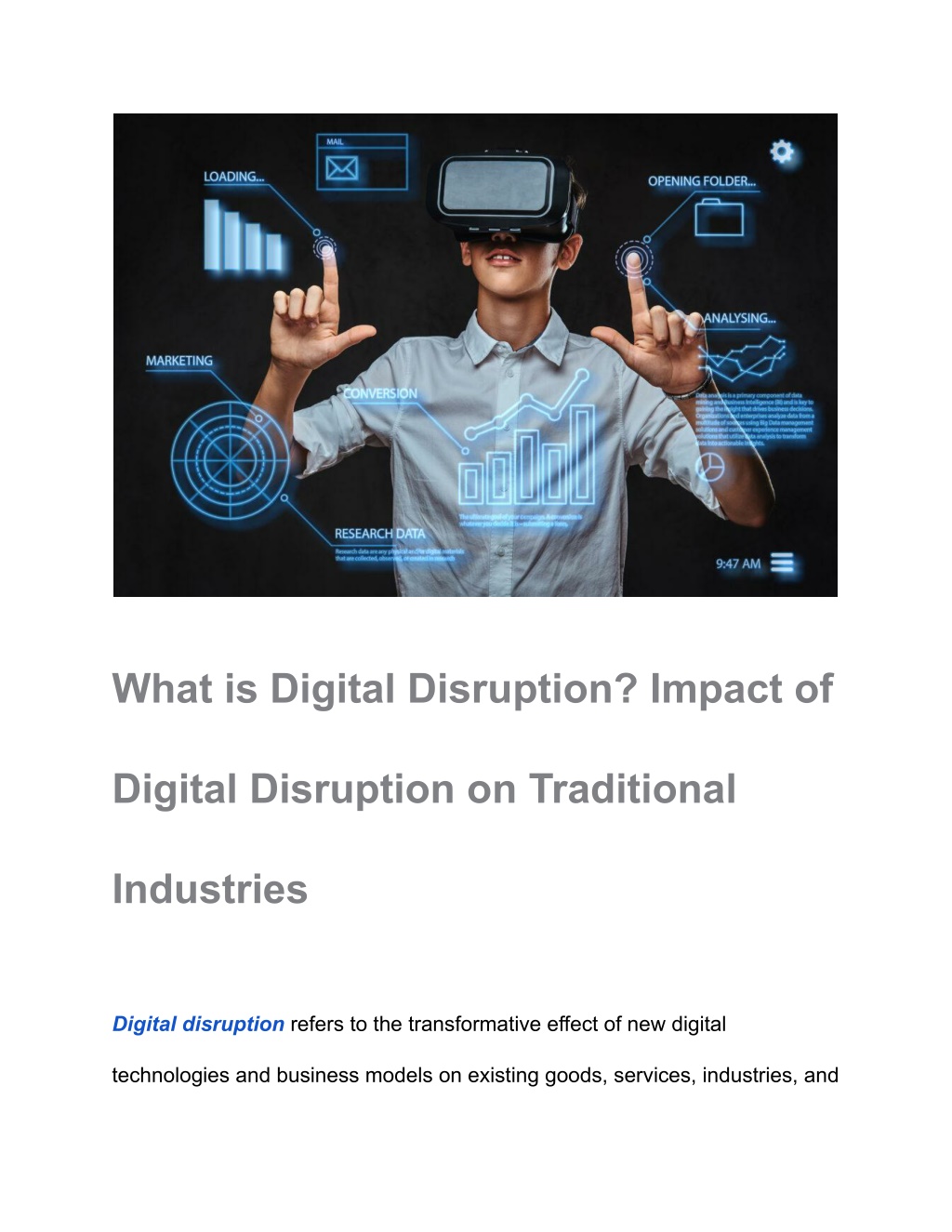
What is Digital Disruption_ Impact of Digital Disruption on Traditional Industries
Digital disruption refers to the transformative effect of new digital technologies and business models on existing goods, services, industries, and societal norms.
Download Presentation

Please find below an Image/Link to download the presentation.
The content on the website is provided AS IS for your information and personal use only. It may not be sold, licensed, or shared on other websites without obtaining consent from the author. Download presentation by click this link. If you encounter any issues during the download, it is possible that the publisher has removed the file from their server.
E N D
Presentation Transcript
What is Digital Disruption? Impact of Digital Disruption on Traditional Industries Digital disruption refers to the transformative effect of new digital technologies and business models on existing goods, services, industries, and
societal norms. Triggered mainly by advancements such as mobile, cloud computing, artificial intelligence, and big data, digital disruption creates a shift in consumer behavior and market dynamics. Key Aspects to Understand: Technological Advancements: Continuous technology innovation. Consumer Expectations: Changes driven by enhanced digital disruption experiences. Market Dynamics: Emergence of new business models challenging traditional structures. Industry Impact: Both opportunities for growth and risks of obsolescence. Understanding these elements is crucial for industries aiming to navigate and leverage digital disruption effectively. Defining Traditional Industries Industries classified as traditional include those with established business structures, procedures, and means of operation. These sectors include manufacturing, agriculture, transportation, healthcare, and retail. Typically,
these industries rely on extensive physical infrastructure, manual operations, and conventional customer engagement strategies. Manufacturing: Utilizes assembly lines, heavy machinery, and manual labor. Agriculture: Involves planting, growing, and harvesting crops using traditional methods. Transportation: Relies on physical vehicles and human-operated logistics. Healthcare: Depends on in-person consultations and paper-based records. Retail: Operates through brick-and-mortar stores and direct customer interactions. Traditional industries often follow rigid regulations and have established supply chains. The Rise of Technology The technology revolution has significantly altered traditional industries. The rapid advancement in digital disruption technologies has enabled unprecedented levels of innovation and efficiency. The following have put traditional business models to the test: Automation: Enhances productivity, and reduces labor costs. Artificial Intelligence (AI): Optimizes decision-making processes. Internet of Things (IoT): enhances data collecting and connection. Cloud Computing: Facilitates scalable storage, and remote access. Big Data Analytics: Provides critical insights for strategic planning.
Mobile Technology: Ensures business continuity, and ubiquitous connectivity. These technological advancements have led to transformational shifts, urging industries to adapt quickly or face obsolescence. Key Drivers of Digital Disruption Digital disruption reshapes industries through technological advancements and changing consumer expectations. Technological Innovation: Rapid advancements in AI, Big Data, cloud computing, and IoT enable new business models. Changing Consumer Behavior: Increasing demand for personalized, real-time experiences drives companies to adapt. Economic Pressures: Cost reduction and efficiency gains become critical as competition intensifies. Regulatory Changes: Evolving regulations necessitate agile responses and innovative compliance solutions. Globalization: Access to international markets amplifies competition and opportunities for growth. Startups and Agile Competitors: Nimbler market entrants challenge traditional players with innovative solutions and flexible approaches.
Impact on Retail Digital disruption has significantly altered the retail sector, emphasizing the necessity for businesses to adapt swiftly to technological advancements. E-commerce: The rise of online shopping platforms has reshaped consumer purchasing behaviors, minimizing the need for physical stores. Personalization: Advanced data analytics enable retailers to offer customized shopping experiences, enhancing customer satisfaction. Mobile Commerce: The proliferation of smartphones facilitates purchases anytime, anywhere, requiring retailers to optimize mobile platforms. Supply Chain: Real-time tracking and automated inventory management streamline operations, reducing costs and inefficiencies. Customer Engagement: Social media and digital disruption marketing tools offer more interactive and direct methods to connect with consumers. Innovation drives retail transformation, challenging traditional paradigms. Digital Transformation in Healthcare
Digital disruption transformation in healthcare redefines how medical services are delivered, improving efficiency and patient outcomes. Key technologies driving this change include: Electronic Health Records (EHRs): Allow for centralized, easily accessible patient information. Telemedicine: Increases access to care through remote consultations. AI and Machine Learning: Enhance diagnostic accuracy and personalized treatment plans. Wearable Devices and IoT: Enable continuous health monitoring. Blockchain: Secures patient data and enhances data integrity. These innovations streamline operations, reduce costs, and offer better patient experiences, challenging traditional healthcare practices profoundly. Financial Services: FinTech Revolution The financial sector faces substantial disruption due to the rise of FinTech: Digital Payments: Technologies such as mobile wallets (e.g., Apple Pay, Google Wallet) transform traditional banking. Blockchain: acts as the foundation for cryptocurrencies and transforms the transparency and security of transactions.
Peer-to-Peer Lending: Websites such as LendingClub circumvent conventional banking establishments. Investment Algorithms: Robo-advisors, such as Betterment, democratize investment management. InsurTech: Companies like Lemonade leverage AI for claims processing, reducing human intervention. These innovations enhance efficiency, reduce costs, and offer personalized services, fundamentally altering conventional financial services. Manufacturing and Industry 4.0 The integration of digital technologies in manufacturing, termed Industry 4.0, revolutionizes production processes. Key components include: IoT (Internet of Things): Connecting machines for seamless communication. AI and Machine Learning: Enhancing predictive maintenance and quality control. Big Data Analytics: Enabling real-time decision-making and process optimization. Robotics and Automation: Increasing efficiency, reducing human error, and lowering costs. 3D Printing: Enabling customizable production and quick prototyping.
These advancements lead to smart factories delivering unprecedented operational efficiencies and innovation in the manufacturing sector. Transport and Logistics Technologies such as GPS, IoT, and artificial intelligence (AI) have transformed transport and logistics. Digital disruption offers enhanced route optimization, leading to reduced transit times and fuel consumption. Predictive analytics forecast demand fluctuations, streamlining inventory and warehousing. Automated systems and robotics in warehousing increase efficiency and accuracy, reducing human error. Blockchain enhances transparency and security in supply chain management. Ride-sharing apps and delivery drones provide innovative solutions for last-mile delivery. E-commerce growth necessitates rapid and reliable logistics, driving the adoption of advanced digital tools. Traditional methods struggle to compete with the operational efficiencies achieved through digital innovations.
Media and Entertainment Evolution The media and entertainment industry has undergone a profound transformation, driven by digital disruption that continues to reshape how content is created, distributed, and consumed. This evolution has introduced new paradigms and challenges, fundamentally altering the landscape of the industry. Streaming Services: The Shift from Traditional Broadcasting: Traditional television and radio broadcasting have been significantly eclipsed by streaming platforms like Netflix, Spotify, and Amazon Prime. These services offer on-demand content, giving consumers unprecedented control over what they watch or listen to, and when. This shift has challenged the dominance of cable television and traditional radio, leading to a decline in linear TV viewership and radio listenership. Original Content Production: Streaming giants have also ventured into producing original content, investing billions in exclusive shows and
movies. This has not only attracted subscribers but has also set new standards for content quality and creativity, further distancing themselves from traditional broadcasters. Content Creation: Rise of User-Generated Content: Platforms like YouTube, TikTok, and Instagram have democratized content creation, allowing individuals to become creators without the need for big budgets or professional equipment. User-generated content has become a significant competitor to traditional media, with many creators amassing large followings and influencing trends, culture, and consumer behavior. Impact on Big-Budget Productions: The success of user-generated content has challenged big-budget productions, pushing established media companies to adapt and innovate. The popularity of short-form, engaging content has forced traditional media to rethink their strategies and explore new formats to capture the audience s attention. Revenue Models: Subscription-Based Models: The industry has seen a major shift from traditional advertisement-driven revenue streams to subscription-based models. Platforms like Netflix, Disney+, and Apple Music have popularized the idea of paying for content without ads, providing a seamless and uninterrupted experience for users. This model has proven to be highly profitable, leading to its adoption across various segments of the media industry. Freemium and Hybrid Models: Some platforms, such as Spotify and Hulu, offer a combination of free ad-supported content and premium subscription options. By appealing to both cost-conscious consumers and those who are prepared to pay for an ad-free experience, these hybrid models enhance income potential while catering to various audience groups. Virtual and Augmented Reality: Immersive Experiences: Virtual Reality (VR) and Augmented Reality (AR) technologies are pushing the boundaries of audience engagement
by offering immersive experiences that traditional media cannot match. From VR concerts and virtual movie screenings to AR-enhanced gaming and interactive storytelling, these technologies are revolutionizing how audiences interact with content. Future of Entertainment: As VR and AR continue to evolve, they are expected to play an increasingly significant role in the future of entertainment. These technologies offer new opportunities for content creators to engage with audiences in innovative ways, creating experiences that are more interactive, personalized, and memorable. Data Analytics: Revolutionizing Personalization: Data-driven insights are at the forefront of the media and entertainment evolution, enabling platforms to offer personalized content recommendations that cater to individual preferences. By analyzing user behavior, demographics, and engagement patterns, companies can tailor content to meet the specific needs and interests of their audience. Targeted Advertising: Data analytics also plays a crucial role in targeted advertising, allowing brands to reach the right audience with the right message at the right time. This precision targeting enhances the effectiveness of advertising campaigns, driving higher engagement and conversion rates. The Digital Revolution s Impact: Beyond Traditional Media: The digital revolution, as noted by Douglas Engelbart, is more significant than the invention of writing or printing. It has not only transformed traditional media but has also created new forms of content, distribution channels, and consumption patterns that continue to evolve at a rapid pace. This ongoing transformation challenges media companies to innovate constantly, adapt to new technologies, and embrace the changing demands of a global, digitally connected audience.
Changing Customer Expectations Digital disruption has fundamentally altered customer expectations across numerous sectors. Individuals now demand: Instantaneous access to services and products via mobile apps and online platforms. Personalized experiences that cater to their specific needs, preferences, and behaviors. Seamless omnichannel interactions, ensuring consistent service whether in-store, online, or via mobile. Greater transparency and accountability, especially concerning data privacy and ethical practices. Rapid customer service response, utilizing AI chatbots or 24/7 support teams to resolve issues swiftly. Innovative and intuitive user interfaces that simplify tasks and enhance user engagement. Companies must adapt to these raised expectations or risk obsolescence.
Strategies for Adapting to Digital Disruption Navigating digital disruption requires forward-thinking and flexibility. Organizations must: Invest in Technology: Allocate resources to upgrade technology and integrate advanced tools. Foster Innovation: Promote a culture encouraging creative solutions and experimentation. Enhance Customer Experience: Leverage data analytics to understand and meet customer needs. Agile Methodologies: Implement agile practices to rapidly respond to market changes. Collaborate with Startups: Partner with innovative startups for fresh perspectives. Employee Training: Provide continuous learning opportunities to upskill the workforce. Digital Transformations Strategy: Develop a comprehensive strategy aligning with business goals. Implementing these strategies can help businesses stay competitive and thrive in the rapidly changing digital landscape.
Future Outlook The digital disruption is changing the conventional industries landscape. Organizations must adapt to remain competitive. Key strategies include: Embracing Innovation: Companies should adopt emerging technologies like AI, IoT, and blockchain to streamline operations and enhance customer experiences. Investing in Talent: Upskilling employees to handle new technologies will be crucial for sustaining growth and innovation. Strategic Partnerships: Collaborating with tech firms and startups can provide access to cutting-edge innovations and foster agility. Ultimately, those who effectively harness digital disruption will lead their industries, while others risk obsolescence. This dynamic is set to intensify, demanding continuous adaptation and foresight.

